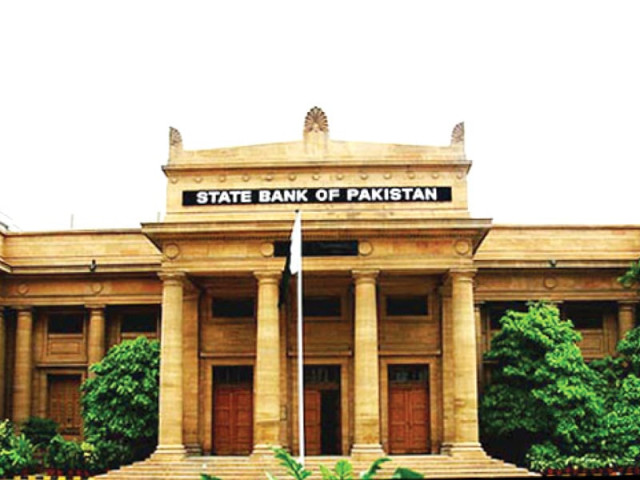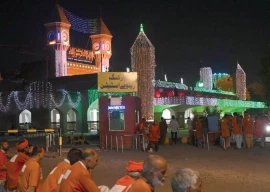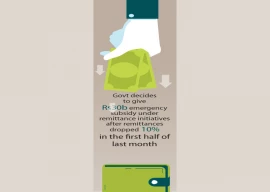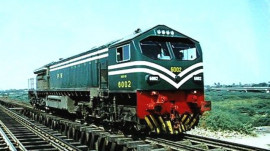
Housing finance of all banks and development finance institutions [DFIs] amounted to Rs62.96 billion at the end of March, which is up 3.5%, or Rs2.1 billion, over the preceding quarter. The increase in the outstanding housing finance on a year-on-year basis, however, equals 15.4%, SBP data shows.
The SBP said in its brief commentary that the rise in disbursements is a reflection of the efforts to create enabling environment for housing finance. “This will be instrumental in increasing economic growth through positive changes in 40 industries allied to housing sector,” it said, adding that housing finance is gradually growing and non-performing loans [NPLs] are declining.
Housing finance remains pitifully low in Pakistan. The mortgage-to-GDP ratio was 0.5% at the end of March, unchanged from a quarter ago.
As per a World Bank study carried out in 2009, there was a backlog of 7.5 million housing units in Pakistan, which was increasing by 0.35 million housing units every year. The number of borrowers decreased to 67,625 at the end of March from 70,368 a year ago, reflecting a decline of 3.9%. The number of borrowers decreased in each category, except Islamic banks. Only 10.3% of total outstanding borrowers were female, SBP said, while the primary source of income for 57.7% borrowers was salary.
The average loan size in the quarter remained Rs4.7 million - an indication that housing finance is availed mainly by the relatively affluent segments of society. Over 63% of gross outstanding housing finance was in the category of “outright purchase” while “construction” and “renovation” products had a share of 24.9% and 11.5%, respectively.
Currently, 24 commercial banks, one microfinance bank and House Building Finance Company [HBFC], which is the only housing bank in Pakistan, are providing people with housing finance. HBFC is the largest market player in terms of gross outstanding housing portfolio with a share of 24%.
Data shows a large portion of HBFC’s portfolio consists of small-sized loans of up to Rs1 million as opposed to other institutions whose portfolios seem tilted towards bigger loans of Rs5 million and above. The size of a typical HBFC loan in Jan-Mar was only Rs1.7 million while the comparable average for private banks and Islamic banks was Rs6.3 million and Rs9.7 million, respectively.
Outstanding housing loans of HBFC amounted to Rs15.1 billion at the end of March, up 15.6% from last year. The same figure for the Islamic banking industry (five Islamic banks and 14 Islamic banking divisions of conventional banks) stood at Rs25.95 billion on March 31. Gross outstanding of the Islamic banking industry increased 6% compared to the preceding quarter, SBP data shows.
Outstanding housing loans of private banks were Rs18.8 billion and public banks were Rs5.6 billion at the end of March. This shows Islamic and private [conventional] banks remained major contributors to gross outstanding housing finance during the 12-month period ending on Mar 31.
The amount of housing finance provided by foreign banks and DFIs increased to Rs0.77 billion from Rs0.44 billion from a year ago.
Non-performing loans [NPLs] decreased from Rs13.3 billion at the end of 2015 to Rs12.6 billion at the end of March, a quarter-on-quarter decrease of almost 5%.
NPLs of HBFC decreased 16%, or Rs0.8 billion, over the last quarter to clock up at Rs4.2 billion at the end of March. The share of NPLs in its total outstanding housing finance portfolio decreased significantly [10%] over the preceding 12 months. Almost 28% of HBFC’s total outstanding portfolio consists of NPLs while its percentage share in the industry-wide NPLs clocked up at 33.4% at the end of March.
Published in The Express Tribune, August 3rd, 2016.
Like Business on Facebook, follow @TribuneBiz on Twitter to stay informed and join in the conversation.



















COMMENTS
Comments are moderated and generally will be posted if they are on-topic and not abusive.
For more information, please see our Comments FAQ